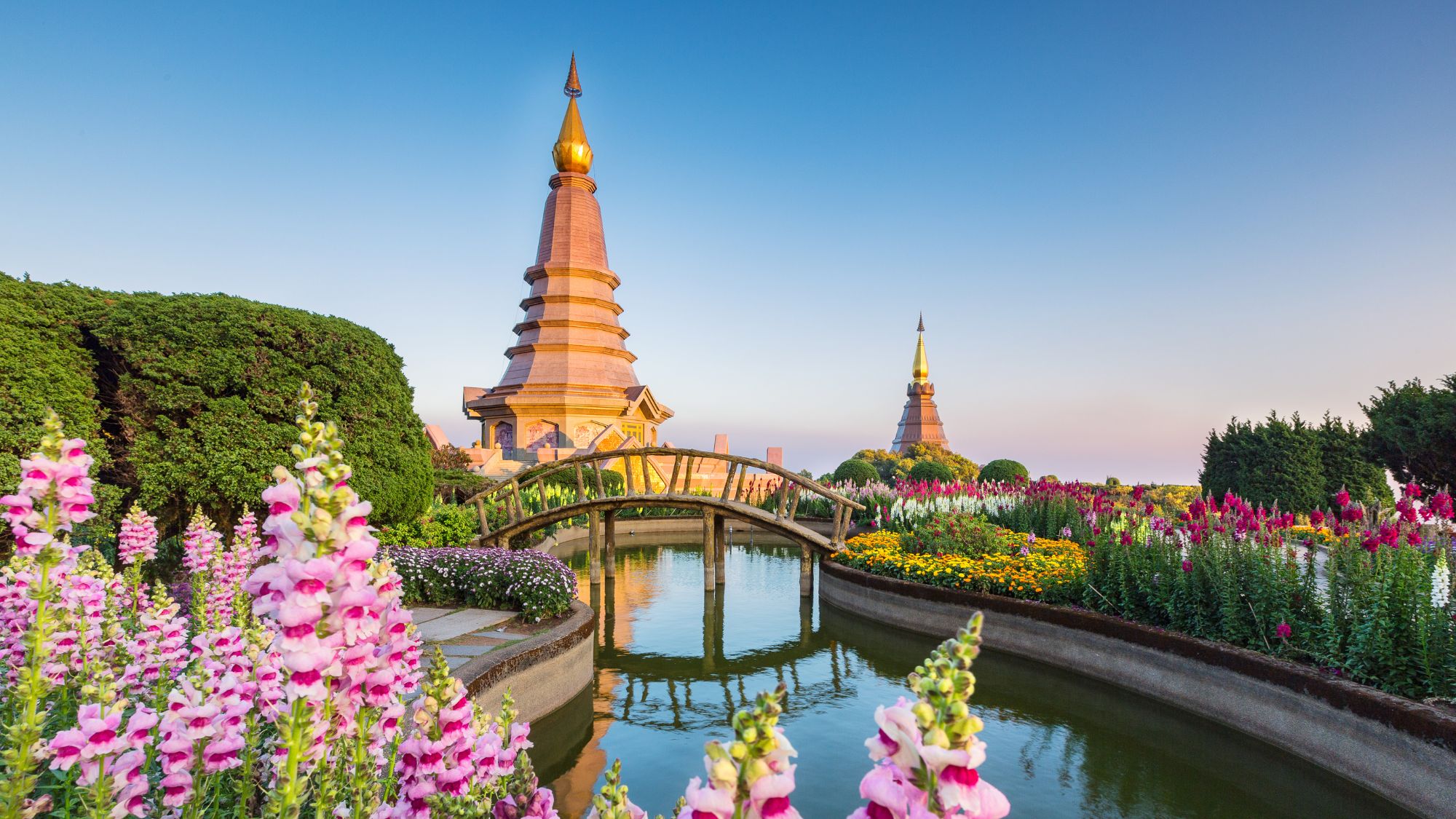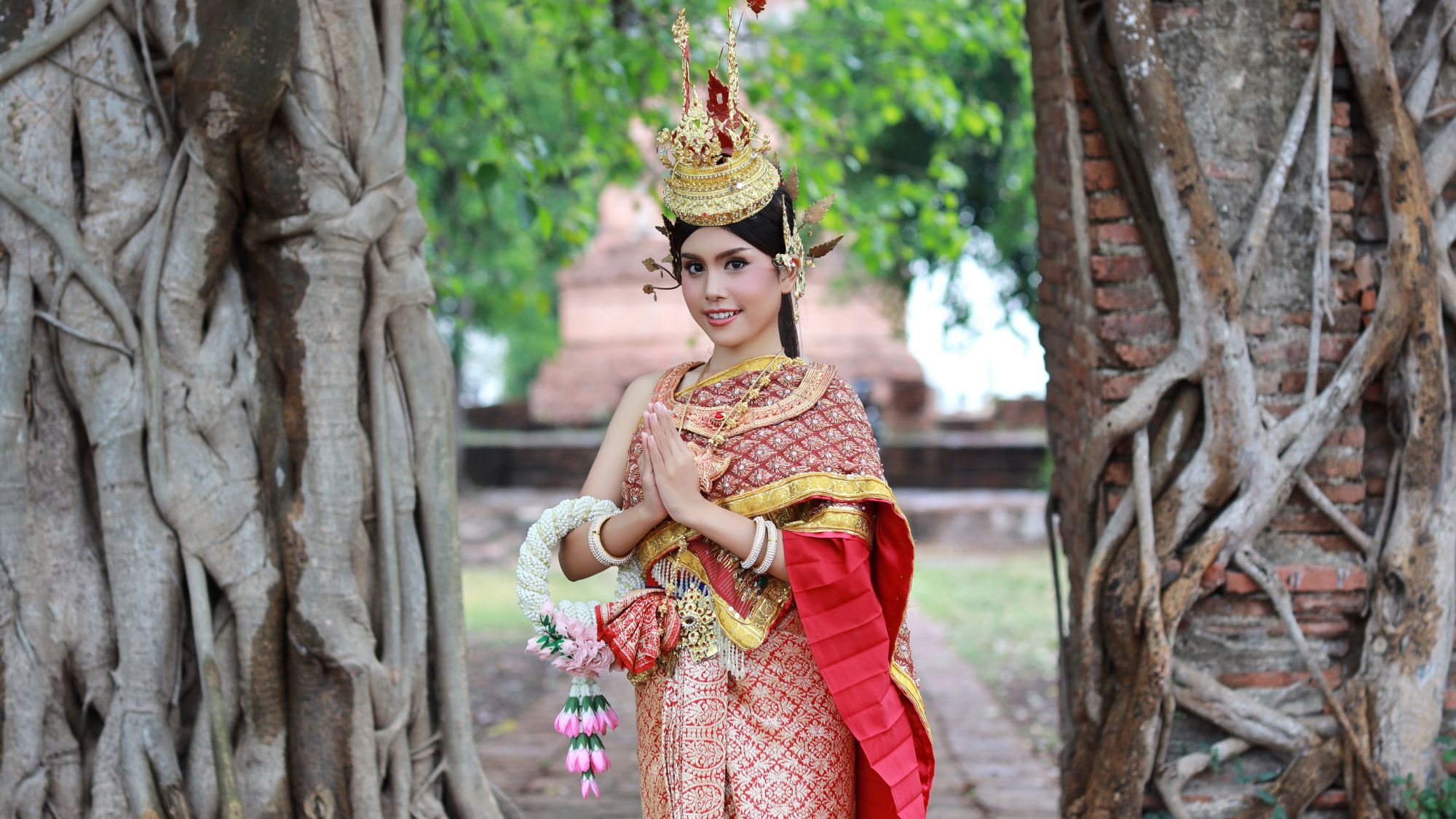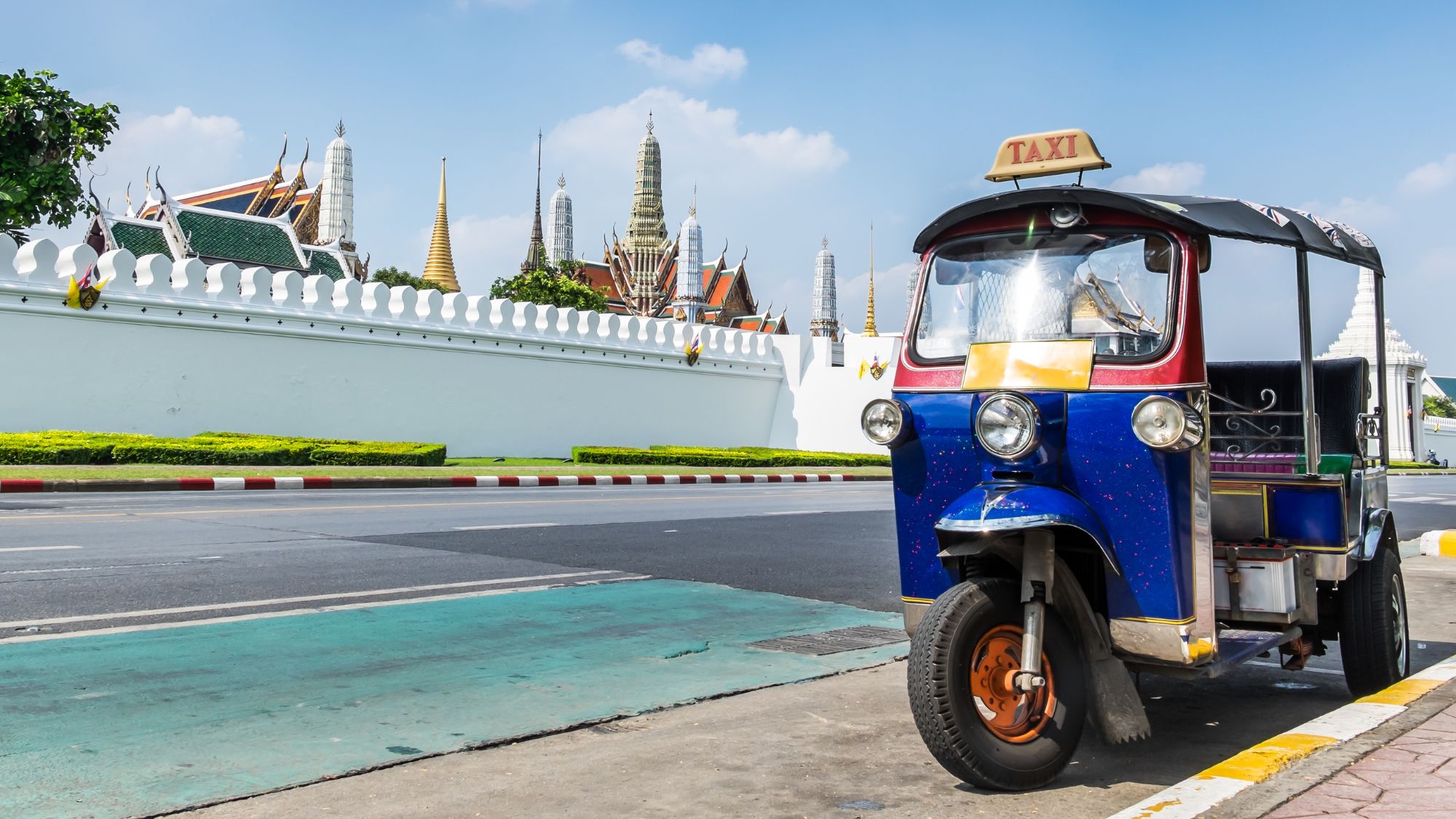When you land in Thailand, you’ll feel it right away — that mix of warmth, chaos, and kindness that makes this country so special. The smiles are real, the food is unforgettable, and the culture has a rhythm all its own. Whether you’re here for golf, beaches, or just a good time, there are a few things worth knowing before you dive in.
7/11s Are Life
You’ll spot them everywhere — and I mean everywhere. There’s often one on each side of the street, and you might find yourself wondering why on earth are there two opposite each other? Don’t question it. Just trust it. T.I.T. – This Is Thailand.
Inside you’ll find everything you could possibly need — water, sandwiches, sunscreen, shaving foam, makeup remover, even a cheeky bottle of beer. Travellers and locals alike rely on 7/11s for daily life.
When to Visit Thailand – Seasons, Sunshine & Showers

Thailand’s warm year-round, but the experience varies by season and region. Knowing when to go can make a big difference — for both weather and crowds.
There are three main seasons:
- Cool & Dry (Nov–Feb): The best weather — clear skies and low humidity.
- Hot Season (Mar–May): Expect plenty of sunshine and early tee times.
- Rainy Season (Jun–Oct): Tropical showers roll through, refreshing the air and greening up the fairways.
But not all rain is created equal.
Pattaya tends to get brief afternoon storms, so morning golf is rarely affected.
Hua Hin can see a day or two washed out, but most of the time the rain passes quickly, leaving clear skies behind.
Phuket, further south, is a different story — when the monsoon hits, it really hits. We recommend avoiding peak rainy season there altogether.
For us, the shoulder seasons — June and October — are the sweet spot.
They bridge the hot and rainy seasons, bringing a slight dip in temperature, fewer tourists, greener courses, and better prices. Rain is possible but rarely ruins plans — you might get a quick downpour followed by sunshine.
Then there’s peak season (Nov–Feb) — the best weather, but also the busiest and most expensive. It’s perfect if you don’t mind sharing fairways and beaches with a few more travellers. But if you prefer space, value, and a touch of adventure, those shoulder months are hard to beat.
Learning the Language – A Little “Sawasdee” Goes a Long Way
Thais truly appreciate when you make the effort to learn a few local phrases.
The basics go a long way:
- Sawasdee krub/ka (สวัสดีครับ/ค่ะ) – Hello (krub for men, ka for women)
- Kob khun krub/ka (ขอบคุณครับ/ค่ะ) – Thank you
- Khor thot krub/ka (ขอโทษครับ/ค่ะ) – Sorry
- Hong nam yoo nai? (ห้องน้ำอยู่ที่ไหน?) – Where is the toilet?
A simple “krub” or “ka” at the end of your sentence, even if you’re speaking English, shows respect and earns instant smiles.
If you’re golfing, here are a few bonus words that might come in handy on the course:
- Kee laa (กี่หลา) – How many yards?
- Kee met (กี่เมตร) – How many meters?
- Tok nam (ตกน้ำ) – In the water
- Tok sai (ตกทราย) – In the sand
- Sai (ซ้าย) – Left
- Kwa (ขวา) – Right
- Keun (ขึ้น) – Up
- Long (ลง) – Down
If you want to save money while shopping, knowing how to ask “How much?” like a local will serve you well:
- Tao Lai krub/ka? (เท่าไหร่ครับ/คะ) – How much?
Be prepared — they’ll probably answer in Thai, so it helps to know your numbers. Here’s a quick guide:
How it works:
- Sip means ten. So 20 is yee-sip, 30 is sam-sip, and so on.
- Roi means one hundred. So song roi baht (สองร้อยบาท) means two hundred baht.
- Combine them and you’ll sound like a pro:
- Sip ha baht = 15 baht
- Neung roi baht = 100 baht
- Song roi ha sip baht = 250 baht
Prices are always in Baht (บาท) — the local currency — and most shops or markets expect cash for small purchases, though cards are widely accepted in hotels and larger stores.
Learn a few of these and you’ll not only save a bit of money but also get a lot of smiles for trying.
Thailand’s Diversity, History & Heart

Thailand is one country, but many worlds in one. Travel from north to south and you’ll notice the language, flavours, and even the rhythm of life change dramatically.
In the north, around Chiang Mai and Chiang Rai, the accent softens — locals speak Kham Mueang, a melodic dialect that sounds gentle and welcoming.
In the northeast, known as Isaan, people speak Lao Isaan, a dialect closely related to Lao. It’s so different that even native Thai speakers from Bangkok often can’t understand a word! Locals from Isaan will switch to Central Thai when speaking to people from outside the region, but amongst themselves, it’s pure Isaan — full of character, slang, and musical tone.
Head south, and the accent becomes sharp and rhythmic, with many Malay influences, while the food turns rich and fiery.
And in Bangkok and Central Thailand, you’ll hear standard Thai — the version taught in schools and used on TV — the country’s linguistic meeting point.
This patchwork of dialects reflects Thailand’s remarkable history. Unlike most of its neighbours, Thailand was never colonised. While the British ruled Myanmar (Burma) to the west and the French controlled Cambodia and Laos to the east, neither side wanted to risk conflict with the other — so Siam, as Thailand was then known, was left independent.
That neutrality allowed Thailand to adapt and thrive. It absorbed influences from India, China, and its neighbours, blending them into something distinctly Thai — a culture that borrows, honours, and yet never loses its identity. You’ll see it in the architecture, taste it in the food, and feel it in the people — from Hindu gods at temple gates to Buddhist monks collecting alms at sunrise, to mosques and churches existing peacefully side by side.
And through all of this, one value sits at the heart of Thai culture: respect.
Thais genuinely value it. It’s built into how they speak, how they greet, and how they interact with others. That doesn’t mean they’re serious or rigid — quite the opposite. Thais love to laugh, joke, and have fun (sanuk is practically a philosophy). But they also value grace.
It’s something that can catch foreigners off guard at first. Loud voices or rowdy pub-style banter might be normal at home, but in Thailand, it can come across as disrespectful or crass. Thais might not say anything — they’ll just quietly think to themselves that person is not respectful. Keep things relaxed and polite, smile often, and you’ll fit right in.
Customs & Culture – Smiles, Wai, and Warmth

Thailand isn’t called The Land of Smiles for nothing. Kindness and respect are woven into daily life here, largely influenced by Buddhism, which encourages humility and calmness.
You’ll often be greeted with a Wai — hands pressed together like a prayer, accompanied by a nod or smile. It’s a graceful way of saying hello, thank you, or goodbye, and one of the simplest ways to show respect.
The height of your hands matters:
- When greeting someone older, a monk or in a position of respect, hold your hands so your fingertips reach your nose.
- For friends or casual encounters, the fingertips should be around chin level.
- Don't raise your hands above your head that might of been a sign of respect 200 years ago, but it's not practiced anymore.
- And don’t hold them too low — that’s considered disrespectful.
Return the gesture whenever you can; it’s a small act that says you understand and appreciate Thai culture.
The Flavours of Thailand – Eat, Savour, Smile
Food is one of Thailand’s greatest joys — and one of the best ways to experience local life. But here’s the thing: what you’re served in restaurants back home isn’t always what locals eat every day.
The Farang (foreigner) Favourites
Let’s start with the Western favourites — the dishes Thais serve you because they know you’ll love them.
Yellow, Green, and Red Curries are the big three: beautiful coconut milk–infused curries made with your choice of meat. Westerners (farangs) go ting tong (a bit crazy) for them.
Then there’s Khao Pad (ข้าวผัด) — Thai-style fried rice, simple and comforting with your choice of chicken, beef, pork, or prawn. It’s mild, not too spicy, and easy to digest — a go-to for anyone easing into Thai cuisine.
The Local Favourites
Want to eat like a local? Start with Tom Yum, Thailand’s famous hot and sour soup. You can choose any meat you like, though Tom Yum Goong (ต้มยำกุ้ง) — the prawn version — is the most famous.
If you prefer a creamier, coconut-based broth, try Tom Kha (ต้มข่า) — it’s rich, aromatic, and perfect for anyone who loves that signature Thai coconut flavour.
Then there’s Pad Krapow (ผัดกะเพรา) — a dish you’ll find everywhere in Thailand. It’s stir-fried meat with holy basil, chilli, and garlic, often served over rice. I recommend ordering it it with a fried egg on top.
“Pad Krapow [meat] Kai Dao krub/ka” (ผัดกะเพรา [meat] ไข่ดาวครับ/ค่ะ) —
that means “Basil stir-fry with [your meat choice] and a fried egg, please.”
My personal favourite? Pad Krapow Moo Sap Kai Dao (ผัดกะเพราหมูสับ) — minced pork, with a crispy fried egg on top. Heaven on a plate. If you like it spicy, just add “pet mak!” (เผ็ดมาก) — make it very spicy.
Larb (ลาบ) is another must-try — a salad made with minced meat, herbs, lime, and roasted rice powder. It’s fresh, spicy, and full of flavour.
And then there’s Som Tam (ส้มตำ) — the iconic green papaya salad. Start with Som Tam Thai, a mild version that balances sweet, sour, and a little spice. But if you’re feeling brave (and have a strong stomach), try Som Tam Pla Ra (ส้มตำปลาร้า) — the Isaan version made with fermented fish sauce.
To foreigners, the smell can be… intense — but for Thais, especially from Isaan, it’s pure comfort food. Eat it the traditional way: with sticky rice, grilled chicken, and a glass of something cold. Absolute perfection.
How to Order Like a Pro
Knowing your meats in Thai will help you order confidently — and earn a few impressed smiles from the locals.
So:
- Pad Krapow Moo Kai Dao = Pork with basil and fried egg
- Pad Krapow Gai Kai Dao = Chicken with basil and fried egg
- Tom Yum Goong = Spicy and sour prawn soup
Once you’ve ordered your first meal in Thai, you’ll feel right at home.
Getting Around Thailand – Easy, Affordable, and Surprisingly Fun

One of the best parts about travelling in Thailand is how easy everything is. Transport, food delivery, laundry — it all just works. You’ll quickly realise that day-to-day life here runs on convenience.
Tuk-tuks are iconic — those colourful, three-wheeled taxis buzzing through the streets. They’re inexpensive and perfect for short rides around town. Just agree on a price before you hop in, smile, and enjoy the ride — it’s part of the Thailand experience.
Taxis are everywhere, especially in major cities and resort areas. Most are metered, but if the driver hesitates, just ask: “Meter dai mai?” (Can you use the meter?). It’s cheap, comfortable, and air-conditioned — ideal after a hot day on the course.
If you want a simpler option, Grab is king. It’s Thailand’s version of Uber, and you can use it for both rides and food delivery. It’s safe, reliable, and incredibly easy to use — just download the app, add your card, and you’re set.
GrabFood is a game-changer. Whether it’s Thai street food, pizza, or your morning coffee, it’s all just a few taps away — and it often arrives faster (and cheaper) than room service.
Motorbikes are everywhere too, but not somerthing you want to risk your life on. They often dart in and out of traffic, over pavements, through questionable yellow/red lights and its just best avoided so you don't end up injured.
Need laundry done? No problem. Laundry shops are everywhere — usually just around the corner from your hotel. Drop off your clothes in the morning, and by the afternoon they’ll come back neatly folded, fresh, and clean — all for around $4 AUD per kilo.
Everything in Thailand feels built to make life easy. Once you settle into the flow, you’ll see why so many travellers come for a visit and never want to leave.
Staying Healthy in Southeast Asia
There’s a term you’ll hear travellers use around this part of the world — “Southeast Asia belly.” It’s not the food’s fault. It’s the water.
Thailand’s street food often gets unfairly blamed, but the truth is, street food that’s cooked fresh and served hot is usually completely fine. The danger lies in what you don’t see — the water used to wash, rinse, or blend.
That smoothie from the beautiful little café that looks spotless? Guess again. The fruit may be washed in tap water, and the blender might be rinsed with it too. Even if everything looks clean, it’s what’s underneath that counts — and local tap water simply isn’t filtered the same way as back home.
If you want to stay healthy:
- Eat street food that’s cooked well and served piping hot. Hot woks and flames are your best friends.
- Skip smoothies and juices unless you know they use bottled or filtered water.
- Avoid ice — no matter how tempting that iced latte looks.
- Stick to wine, beer, or sealed bottled drinks — the safe, delicious, and socially acceptable way to hydrate.
Your stomach will thank you, and you’ll still get to enjoy all the incredible flavours Thailand has to offer — safely.
Final Thoughts – This Is Thailand
Thailand is a place where contradictions somehow make sense — where chaos and calm coexist, where strangers smile at you for no reason, and where a 7/11 toastie just makes sense.
Learn a few words, share a few smiles, and you’ll see why everyone who visits falls in love with this place.
Come for the golf, stay for the smiles — and maybe grab a pad krapow on your way back to the hotel.






